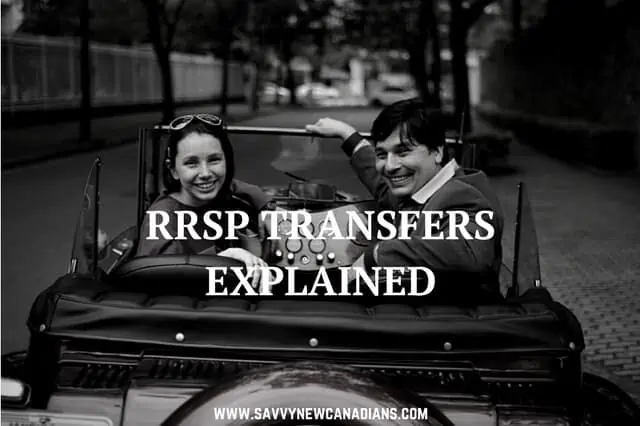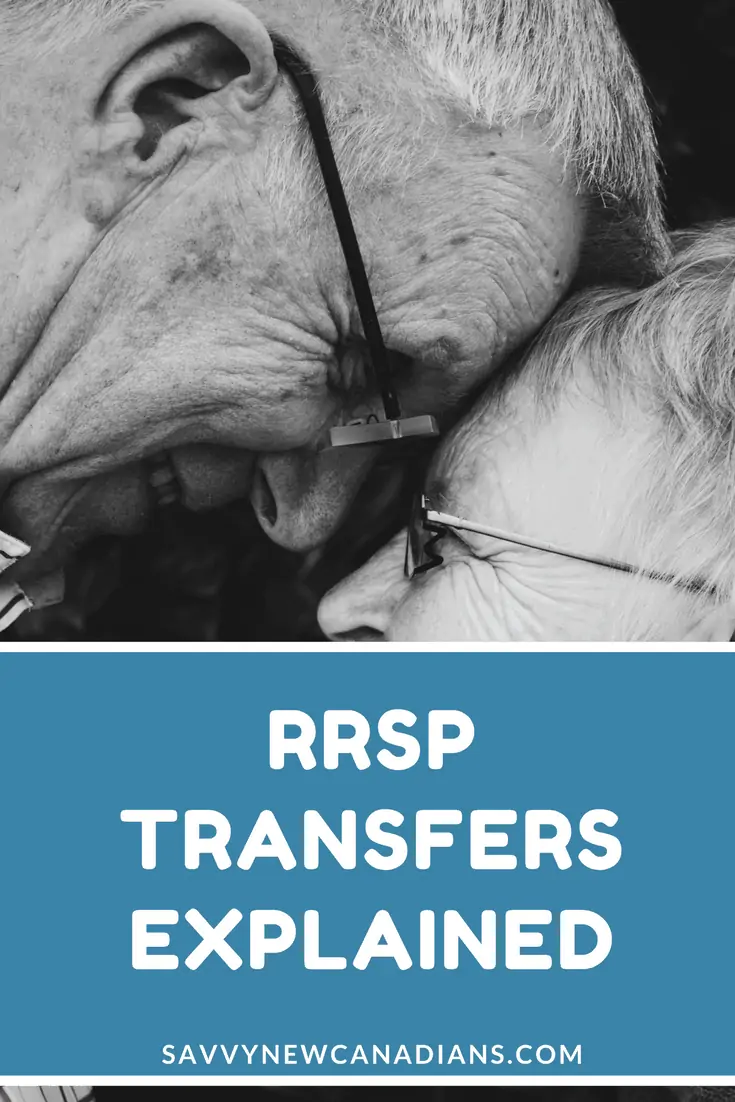There are several scenarios where you may need to move your RRSP assets around. For example, this could be because you want to move your RRSP to another bank and a new RRSP account, or it could be that you have just turned 71 and your RRSP account has matured and needs to be converted to an annuity or RRIF.
Alternatively, changes to your RRSP may result from adding assets from other accounts (registered and non-registered) to your RRSP. This may include transfers from an RESP, DPSP, RPP, PRPP, or a deceased annuitant’s RRSP.
Finally, you may just want to transfer or “rollover” your RRSP to the Registered Disability Savings Plan (RDSP) of a financially dependent disabled child or grandchild when you pass away.
So, how do you transfer assets to and from your RRSP, and what are the potential tax implications?
RRSP to RRSP Transfers (Between Banks)
You can transfer assets from your RRSP at one bank to another RRSP at a different bank. You can also transfer assets between RRSP accounts at the same financial institution.
To shelter your assets from income tax, you must make a direct transfer between the financial institutions. A “direct transfer” infers that the transfer is made directly by the financial institutions involved. The transfer of assets can either be “in kind” or “in cash.”
In Kind Transfer means that you plan on staying invested in the same assets following transferring them without buying or selling anything. For this to work, the new (receiving) financial institution must have the same investment assets available.
For example, if your RRSP account at Bank A contains shares of Company XYZ, for an in-kind transfer to work, Bank B (where your RRSP is being transferred to) must also deal in or have access to shares of Company XYZ. In a case where your RRSP is invested in proprietary assets that are not offered elsewhere, in-cash transfer may be required.
In Cash Transfer means that your RRSP investments are sold by your current provider, and the resulting cash is transferred to the new financial institution, where it’s then invested in new assets – stocks, mutual funds, GICs, or whatever you have agreed to purchase.
For both “in cash” and “in kind” RRSP transfers conducted on your behalf by your financial institution, no tax is withheld. While a transfer fee is likely to be charged by the financial institution doing the transfer, you should ask the receiving financial institution if they are willing to cover the fees. They are usually willing to offer you a good deal if your RRSP assets are significant.
Forms: You will need to complete Form T2033 at your new financial institution for the transfer to go ahead.

Transfers between RRSP and other Registered Plans
RRSP to RRIF Transfers
And vice versa.
After age 71, you can no longer contribute to an RRSP and are required to convert your RRSP into a Registered Retirement Income Fund (RRIF), an annuity, or have it paid out lump-sum. At this stage, your RRSP is considered to have “matured.” There are no immediate tax consequences when you transfer your RRSP to an RRIF. However, withdrawals or RRIF payments will be considered taxable income in the year you receive them.
Individuals can also transfer RRSP assets into an RRIF at a younger age (less than 71 years). This may be done for various reasons, including to qualify for the $2,000 Pension Income Tax Credit and pension income splitting with a spouse.
If you have converted all or part of your RRSP to an RRIF early and are still under 71 years of age, you can transfer it back to an RRSP. To process your transfer from RRSP to RRIF, you must complete Form T2033 Direct Transfer.
RRSP to RDSP Transfers
Starting in 2011, a parent or grandparent of a financially dependent disabled child can plan to have all or some of their RRSP roll over into their child’s (or grandchild’s) Registered Disability Savings Plan (RDSP) after they pass away.
A disabled child is considered financially dependent if the child was financially dependent on the deceased because of mental or physical infirmity and had a personal income in the previous year that is less than the basic personal amount ($14,398) plus the disability amount ($8,870) for that year – a total of $23,268 for 2022.
The lifetime contribution limit for an RDSP is $200,000, and rollover proceeds from an RRSP will not qualify for the matching Canada Disability Savings Grant (CDSG).
When rolling over an RRSP to an RDSP, Form RC4625 – Rollover to a Registered Disability Savings Plan Under Paragraph 60(m) must be completed and included in the income tax and benefit return of both the beneficiary and the deceased.
RESP to RRSP Transfers
If you have been contributing to an RESP for a child who then decides not to pursue post-secondary education, you have some options on what to do with the funds:
- Keep the RESP open
- Transfer the RESP to another beneficiary
- Transfer the funds to your RRSP
- Close the RESP
- Transfer the funds to an RDSP
You can transfer up to $50,000 from an RESP to an RRSP if eligible. Form T1171 is completed to effect this transfer.
Retiring Allowances to RRSP
If you have received severance pay following retirement, you can transfer the eligible portion to your RRSP without affecting your RRSP deduction limit or needing a contribution room. There’s also no tax withheld if the transfer is directly processed by your employer.
For the non-eligible portion of your retiring allowance, you can contribute it to your RRSP or a spouse/common-law partner’s spousal RRSP if you have a contribution room left.
RPP to RRSP Transfers
You can transfer lump-sum Registered Pension Plan (RPP) payments to an RRSP on a tax-deferred basis if the transfer is done directly by the payer or employer. Complete and submit Form T2151 at the receiving financial institution.
Transfers from a Non-Registered Account to an RRSP
You can transfer investment assets from your non-registered account to an RRSP. The transfer can be done “in kind” or “in cash.”
For an in-kind transfer/contribution, the assets (such as stocks and bonds) are transferred directly to your RRSP. The transfer or contribution amount to your RRSP is deemed to be the fair market value of the investment, and any gain is subject to capital gains tax.
If your assets were transferred at a loss (compared to your adjusted cost base), you cannot claim a capital loss due to the superficial loss rule.
To avoid this problem, you can decide to sell the securities (stocks, bonds, etc.) and then wait for 31 days or more before purchasing the same securities in your RRSP account. This way, you avoid the superficial loss rule and can claim a capital loss for tax purposes.
Related Reading
- 3 Ways To Use Your RRSP
- RRSP over-contribution: What are the Penalties?
- All You Need To Know About the RRSP
- TFSA vs. RRSP: A Detailed Comparison





I’m attempting to transfer my RRSP’s from TD Canada Trust to Tangerine but the manager at TD Bank has told me that I can not do this since my RRSP’s are not at maturity yet. Could you please comment on this? Thanks
@Kivari: Are your RRSPs invested in a term deposit e.g. GIC? This may be the reason why?
Can you transfer from an RRSP to an RESP? There doesn’t seem to be much info on that direction of transfer. Thanks!
@Mark: No, but you can do the reverse under some conditions. See link below:
https://www.savvynewcanadians.com/resp-child-decides-not-pursue-higher-education/
Is this a bad time to cash in proprietary funds to transfer to another institution? Will i lose money?
Funds are Mackenzie & Fidelity
Thanks
@Janice: It will depend on a lot of factors that I can’t reliably convey without a full assessment of your current portfolio and your investment objectives. You will probably be better served by chatting with a financial advisor/planner.
Can I transfer cash from a RRSP @ one financial institution to a RSP @ another financial institution with out tax/penalties…pls advise
@Cheryl: Yes, you can,
https://www.savvynewcanadians.com/transfer-rrsp-tfsa-resp-rrif-between-banks/
Hi, I am 65 years old and converted my entire RRSP to a RRIF in 2019. I started receiving RRIF payments as of Jan 2020. My TFSA is maxed out. Can I still contribute to my RRSP til I’m 71?
I still have RRSP contribution room.
Plus, as of Sept 2020 started receiving my OAS.I am concerned about the OAS clawback. I know
I can cancel my OAS within 6 months of receiving first payment, and re-apply later. Is this a sound strategy?
I have recently used my RRSP money for First time home buying and now I am thinking of transferring this RRSP to another institute using in cash transfer way. Once it gets transferred to the new institute, I am going to add money to this transferred RRSP account. So this amount that I am going to add would be count towards Repayment of the money that I used for Home buying?
Hi, I have an RSP that has both cash and investments. Can I transfer just the cash portion to another RSP with another bank? Thanks!
@Myrna: Yes, you can transfer all or just a portion of your RRSP assets to a different bank.
How long does it usually take to release a GRSP for transfer when you quit the company?
My Canadian husband recently passed away we were in the middle of immigration of him to the united states, as I am an American and his beneficiary Manu-life has been running me ragged. They say they have all the information they need and offered me a lump sum due to my citizenship being American but its been three months and i keep getting the answer of Give us 3-5 days He had an RPP they say is locked? I am exhausted in waiting please help
@Rachel: Sorry to hear about your troubles with Manulife. Unfortunately, your best bet would be to keep contacting them until they give you a reasonable response. The paperwork may take a while, but since you are his spouse and a beneficiary, it shouldn’t be an issue for them to sort things out. All the best.
can I do a LIRA partial transfer to another financial institution? just like an RRSP.
I assume the same would be true for a LIF transfer?
@Chris: Yes, I believe you can transfer LIRA and LIF to another financial institution.
I have a stock in an unregistered account. It has some pretty good gains. Is it possible to transfer it to an RRSP in kind without paying taxes on the gains? The total market value of the stock is less than my RRSP contribution amount.
@Mike: I believe for this to work, you must be transferring from an account that was initially set up as an RRSP.
What is the last day I can transfer funds from my RRSP to my TFSA for the 2021 tax year. I want to get as close to the clawback net income as possible.
Is the deadline Dec 31, 2021 or March 30, 2022?
Thank you
@BBL: There are no ‘tax advantages’ or deadlines for moving RRSP funds to a TFSA. You can do that at any time if there’s a reason for it, however, taxes will be withheld at the source by your bank.
Can I transfer $$ from my Non-registered account to my spouse RRSP?
@Alex: Yes, if you have RRSP contribution room. Also, I think it would have to be an “in cash” type of transaction.
I have 4 RRSP GICs with different maturity dates in this year that need to be transferred to my RRIF account at another bank. What’s the best way to do this since I don’t to lose the interest that’s accumulating?
@Jan: If you must collapse the GICs into RRIFs this year, I suppose you could convert the RRSP GIC into RRIFs at the current location and move them after they have matured?